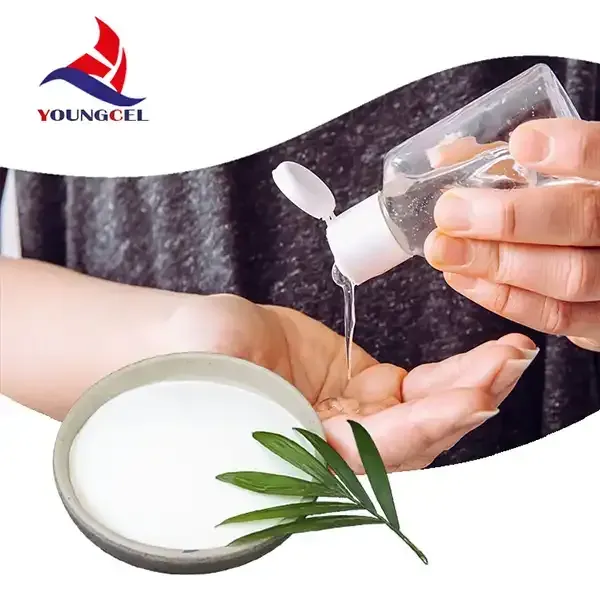The Role of HPMC Thickener in Modern Formulations
Hydroxypropyl Methylcellulose (HPMC) is a versatile and important thickening agent widely used in various industries, particularly in food, pharmaceuticals, and cosmetics. This cellulose derivative, derived from natural cellulose sources, possesses unique properties that render it an indispensable component in modern formulations. Understanding HPMC thickener’s characteristics, applications, and advantages can provide valuable insights into its role in product development.
Properties of HPMC
One of the most significant aspects of HPMC is its thickening capability. It can significantly increase the viscosity of aqueous solutions, making it an effective thickener. HPMC is soluble in water, forming a gel when mixed, which also helps to improve the texture and mouthfeel of food products, as well as enhance the stability of emulsions and suspensions in cosmetics and pharmaceuticals.
HPMC is characterized by its non-ionic nature, which means it does not carry a charge. This property is particularly beneficial in formulations where ionic components could lead to destabilization. Moreover, HPMC is temperature-sensitive, displaying thermoreversible gelation under certain conditions, making it versatile in applications requiring both stability and reliability across temperature fluctuations.
Applications in Food Industry
In the food industry, HPMC is commonly used as a thickener, emulsifier, and stabilizer. It can be found in products such as sauces, dressings, and baked goods, where it helps improve texture and mouthfeel while preventing separation. HPMC also serves as an effective fat replacer, allowing manufacturers to reduce calorie content without compromising the taste or consistency of their products.
Another significant application of HPMC in food is in gluten-free baking. It can help mimic the elasticity and texture typically provided by gluten, thereby enhancing the quality of gluten-free personal baked items and packaged products. Additionally, its water retention properties contribute to maintaining moisture levels in baked goods, extending shelf life and improving overall quality.
Pharmaceutical Applications
hpmc thickener

HPMC is widely utilized in the pharmaceutical industry due to its biocompatibility and non-toxic nature. It is an essential component in the formulation of tablets, capsules, and other dosage forms. HPMC acts as a binder, coating agent, and controlled-release substance, facilitating the even distribution of active ingredients. Its ability to form a gel-like structure in the presence of water also aids in sustained drug release, making it a valuable ingredient in sustained-release formulations.
Moreover, HPMC is used in the production of eye drops and other ophthalmic solutions due to its ability to maintain moisture and prevent eye irritation. The thickening property of HPMC helps to prolong the contact time of the eye drops with the eye surface, enhancing the therapeutic effect of the administered medication.
Cosmetic and Personal Care Applications
In the realm of cosmetics and personal care, HPMC is renowned for its thickening and stabilizing properties. It is found in a variety of products, such as lotions, creams, shampoos, and gels. HPMC not only improves the texture and spreadability of these formulations but also ensures a stable product by preventing separation and settling of ingredients.
Additionally, HPMC can provide a moisturizing effect in skin care products, promoting hydration and improving skin feel. Its compatibility with other cosmetic ingredients makes it an ideal choice for formulators looking to create products that perform well and deliver an enjoyable application experience.
Environmental Considerations
As a cellulose derivative, HPMC is classified as a biodegradable and environmentally friendly ingredient. This aspect is increasingly important in product formulation today, as consumers become more aware of the environmental impact of the products they use. HPMC’s natural origin, coupled with its functionality, aligns well with the growing demand for sustainable and eco-friendly products in various sectors.
Conclusion
In conclusion, Hydroxypropyl Methylcellulose (HPMC) is a powerful thickening agent with diverse applications across food, pharmaceutical, and cosmetic industries. Its unique properties, such as temperature sensitivity, non-ionic nature, and biodegradability, make it a favored choice for formulators striving for quality and sustainability. As industries continue to evolve and consumer preferences shift towards natural and effective solutions, HPMC will undoubtedly remain a cornerstone ingredient in modern formulations, enhancing product quality and performance.
-
A Comprehensive Guide to Methyl Ethyl Hydroxyethyl Cellulose: Applications and Industry InsightsNewsNov.24,2025
-
Understanding Methyl 2 Hydroxyethyl Cellulose: Uses, Benefits & Industry InsightsNewsNov.24,2025
-
Hydroxyethyl Methyl Cellulose HEMC: Industrial Uses, Benefits & Future TrendsNewsNov.23,2025
-
HEMC Cellulose: Versatile & Sustainable Industrial Polymer | YoungcelNewsNov.23,2025
-
Methyl Hydroxyethyl Cellulose: Versatile Building Block for Industry & SustainabilityNewsNov.23,2025
-
CAS 9032 42 2: Understanding Polyvinyl Alcohol's Impact on Industry & SustainabilityNewsNov.22,2025




